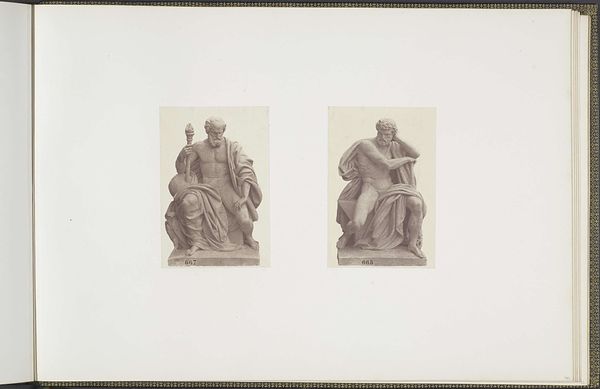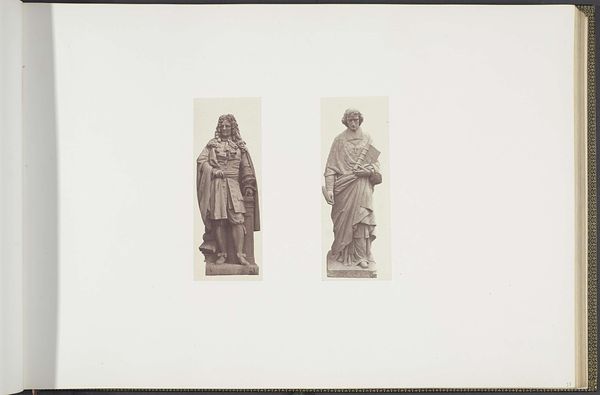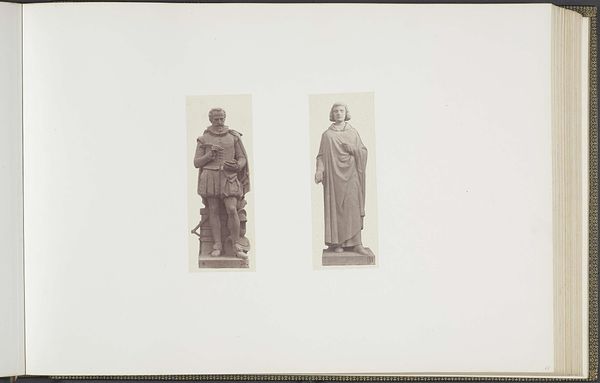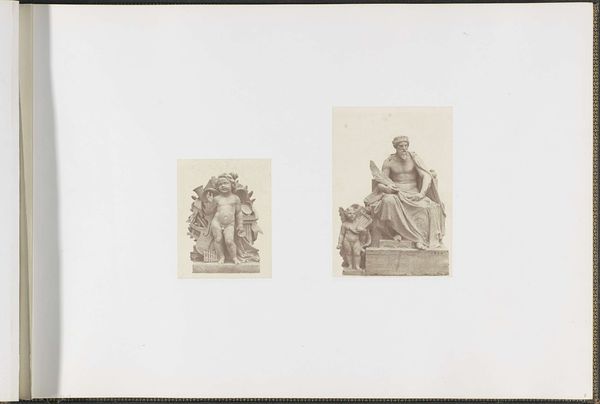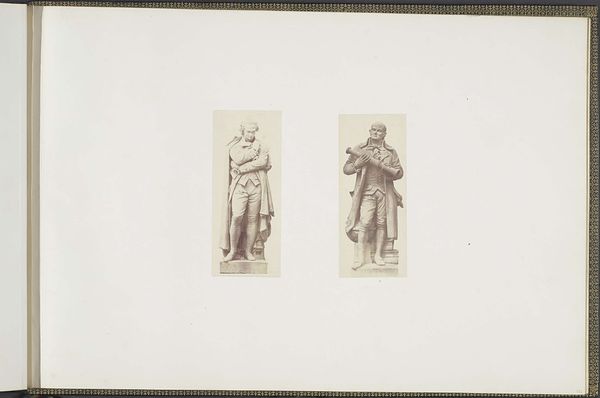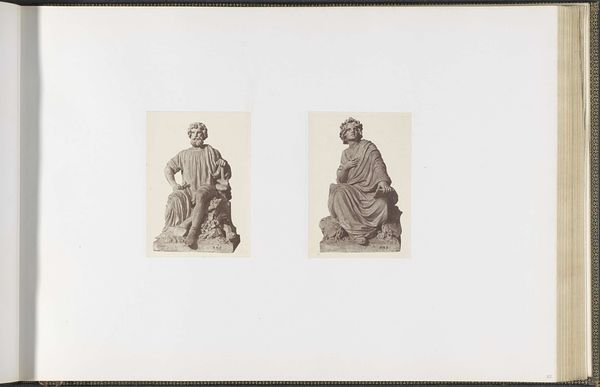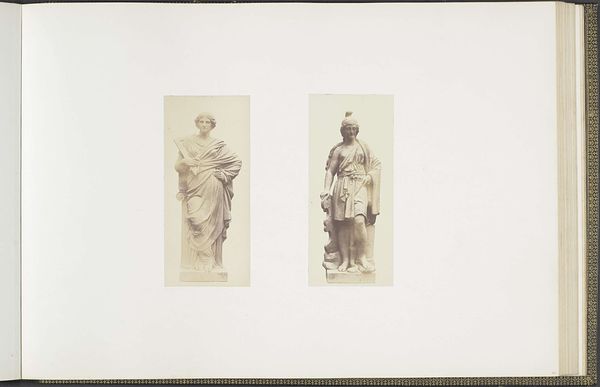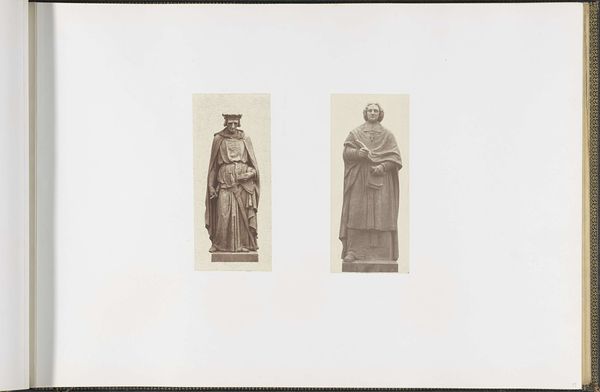
Gipsmodellen voor beeldhouwwerken op het Palais du Louvre: links "Marigny" door Nicolas Bernard Raggi en rechts "Chénier" door Auguste Préault c. 1855 - 1857
0:00
0:00
edouardbaldus
Rijksmuseum
photography, sculpture, gelatin-silver-print
#
neoclacissism
#
photography
#
sculpture
#
gelatin-silver-print
Dimensions: height 382 mm, width 560 mm
Copyright: Rijks Museum: Open Domain
Editor: This gelatin-silver print from around 1855-1857, by Edouard Baldus, features plaster models for sculptures at the Palais du Louvre. I find it fascinating how photography is used here to document sculpture – a medium already concerned with form. What’s your perspective on why Baldus might have chosen to capture these models in this way? Curator: Ah, a photograph *of* sculptures! It’s a layered echo, isn't it? Perhaps Baldus was thinking about reproducibility. Before photography, capturing the essence of monumental sculptures involved sketches or engravings, always filtered through someone else's hand. With this photograph, there's an immediacy, an almost democratic access to these Neoclassical forms. What does the juxtaposition of these two figures, "Marigny" and "Chénier", suggest to you? They seem so self-contained, yet utterly dependent on their historical context. Editor: That's a brilliant point about accessibility! It makes me wonder about the intended audience and how they might have received it. As for the juxtaposition, it seems like Baldus is highlighting the range of expression possible within Neoclassical sculpture - from stoic civic duty to more emotionally charged portraiture. Curator: Precisely! And in rendering them both through the new lens of photography, he invites us to see them not just as individual likenesses, but as documents, artifacts… almost specimens. How different is it viewing them here, contrasted in this frame, than encountering them within the Louvre itself, I wonder? It throws the familiar into strange new light. Don't you think? Editor: I completely agree. Thinking about this photograph as a document makes me appreciate its role as a sort of proto-archive! Thanks so much for shedding light on this, I learned a lot. Curator: The pleasure was entirely mine. Sometimes, seeing familiar subjects through new mediums wakes us from a kind of sleep!
Comments
No comments
Be the first to comment and join the conversation on the ultimate creative platform.

